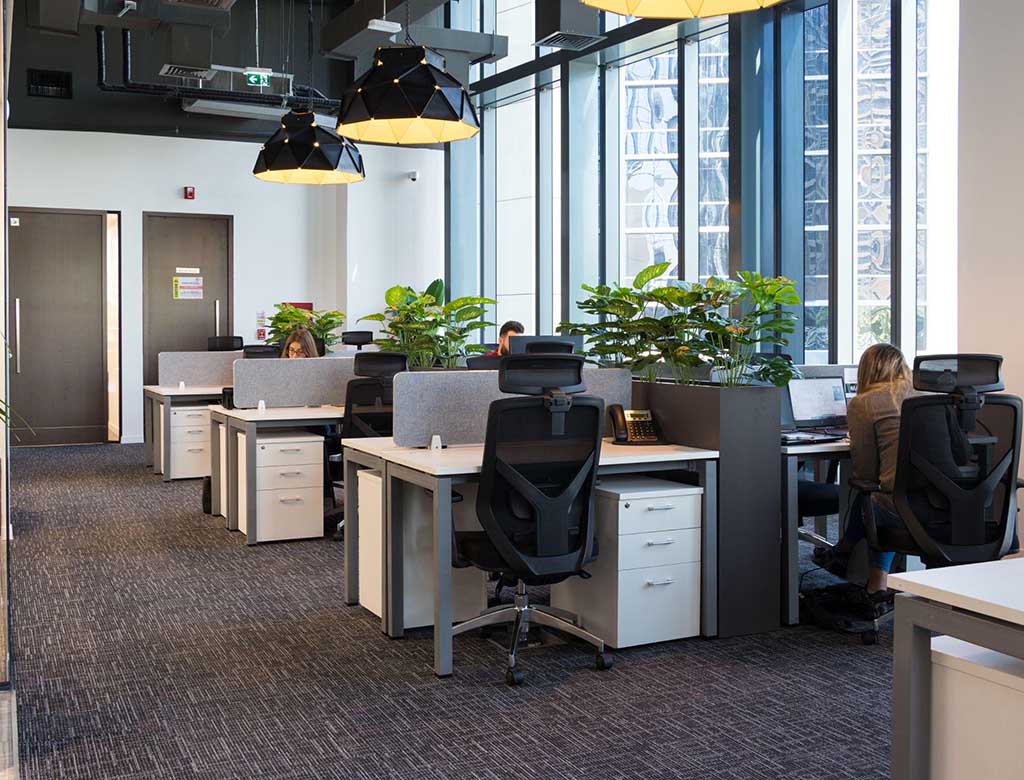Some years back, working from home was a rare perk for only a few. A global move towards flexible job styles has brought this idea to the center of current job trends. The way we work has changed a lot, including where we work. Shared office spaces have become more popular and have changed how we view our jobs. Coworking spaces are now standard for many people. This shift has had a lasting impact on how we work today.
Adapting to the New Normal
With the rise of work-from-home as the latest standard, the coworking space had to innovate to keep up. This innovation extended beyond mere physical workspace provision. It branched into digital services and fostered dynamic networks for those working remotely.
Below are examples of how coworking spaces adapt to a new era, showcasing their evolution in response to changing work trends.
-
Safety First: Coworking spaces have quickly adapted to ensure health and safety in a post-pandemic world. They now offer clean and orderly workspaces, guidelines for maintaining distance, and touch-free services. This makes it a secure spot for people working remotely.
-
Embracing Technology: Coworking spaces have significantly increased their use of technology. They now employ advanced software and tools to foster connectivity, simplify task management, and provide virtual meeting rooms.
-
Flexible Membership Options: Recognizing the diverse needs of remote workers, coworking spaces have rolled out various membership plans. Options such as part-time and night-time access or using different locations accommodate the shifting demands of remote work.
Creating Virtual Communities with a Personal Connection
Recently, there has been a significant shift towards building virtual communities. Coworking spaces have transformed into platforms that connect and support remote workers beyond physical locations. Through virtual networking events, webinars, and workshops, they create an active learning and personal growth environment.
Despite the increasing reliance on digital platforms, coworking spaces have made concerted efforts to maintain a human touch. Many have introduced wellness initiatives such as online yoga classes, mental health workshops, and virtual coffee breaks.
These initiatives aim to prevent isolation and burnout associated with the remote work lifestyle. Coworking spaces ensure individuals can nurture their well-being and strike a healthy work-life balance by providing these resources.
Overall, these developments reflect the commitment of coworking spaces to adapt to the changing needs of remote workers, fostering a supportive and engaging environment beyond mere physical spaces.
Additionally, if you opt for serviced offices within coworking spaces, you can enjoy the benefits of professional value-adding services and amenities. By choosing serviced offices, remote workers can focus on their core tasks while having the convenience of a well-maintained and fully functional office environment.
This further enhances coworking spaces’ commitment to cater to remote workers’ diverse needs and provide them with a seamless and productive work experience.
Conclusion: Embracing Change
The work landscape has changed irrevocably, and coworking spaces have shown admirable resilience and adaptability. As we continue to navigate the remote work revolution, these spaces will remain crucial in shaping the future of work.
They are places to work and platforms for connection, collaboration, and community building. The changes we’ve seen so far are just the beginning, and the evolution of coworking spaces promises to be an exciting journey.

Leave a Reply